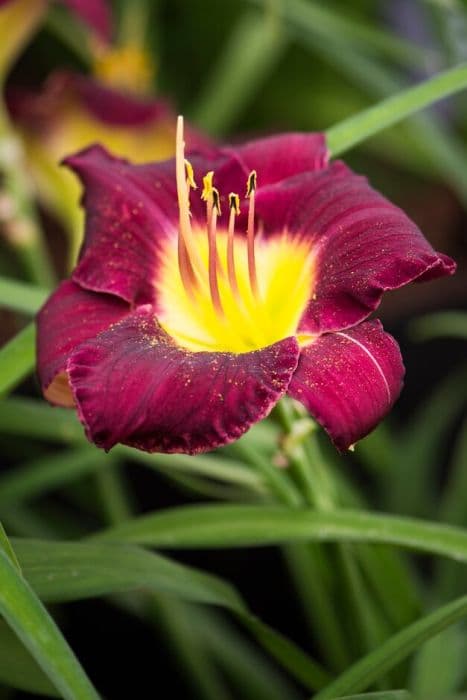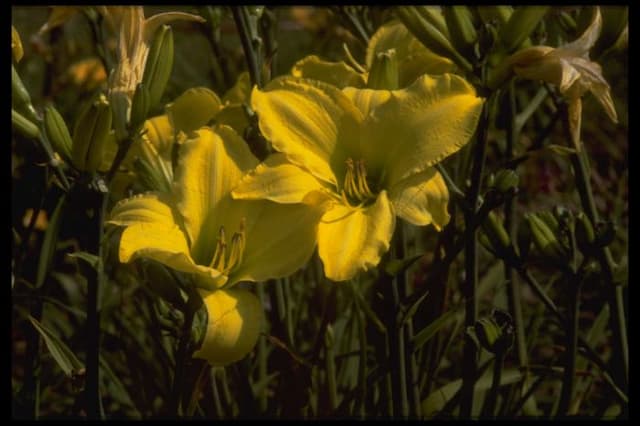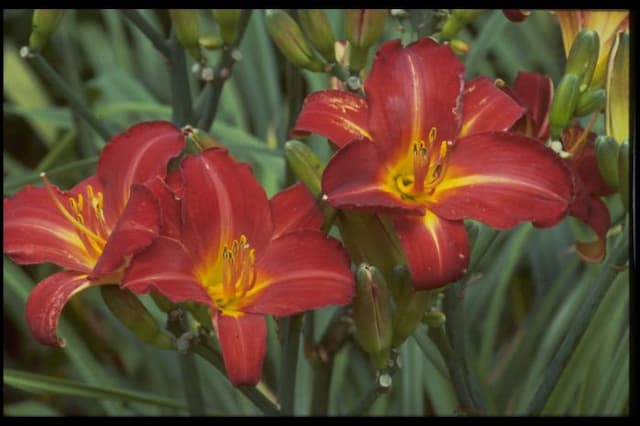New Zealand Flax Phormium Black Velvet = 'Seivel' (PBR)
![flax lily [Black Velvet]](/_next/image?url=https%3A%2F%2Fplants-admin.emdemapps.com%2Fimages%2Fplants%2F%2Fimages%2F604b62051d2fc.png&w=3840&q=75)
ABOUT
The Phormium Black Velvet, also known as New Zealand Flax, features a striking and bold appearance. It stands out with its dark, almost black leaves that possess a deep, lush shade which may appear to have a velvety texture. The plant's foliage is sword-shaped and arching, creating a dramatic visual effect. The leaves have a rich, burgundy hue with slightly contrasting margins that may appear to be a lighter or different color, adding to its visual interest. This variety of New Zealand Flax has a robust and architectural form, making it an excellent choice for adding a touch of sophistication to any garden or landscape design. Its leaves fan out from the base, creating a symmetrical and sculptural display. The overall impression of the plant is one of elegance and strength, with a color palette that is both intense and captivating, drawing the eye and becoming a focal point wherever it is planted.
About this plant
 Names
NamesFamily
Asphodelaceae
Synonyms
New Zealand Flax, Black Velvet Flax
Common names
Phormium 'Seivel' (PBR).
 Toxicity
ToxicityTo humans
New Zealand Flax is not known for being toxic to humans. However, as with any plant, individual sensitivities can cause mild irritation when handling or ingesting. It is prudent to avoid eating any parts of the plant as it's not considered edible and to wash hands after handling to prevent potential skin irritation.
To pets
New Zealand Flax is also not typically considered toxic to pets. Though it is not poisonous, if pets ingest large amounts of the plant, they may experience mild gastrointestinal distress such as vomiting or diarrhea due to the plant’s fibrous nature. Close observation is recommended if a pet consumes this plant, and a veterinarian should be consulted if any concerning symptoms appear.
 Characteristics
CharacteristicsLife cycle
Perennials
Foliage type
Evergreen
Color of leaves
Dark purple
Height
2 feet (0.6 meters)
Spread
2 feet (0.6 meters)
Plant type
Shrub
Hardiness zones
8
Native area
New Zealand
Benefits
 General Benefits
General Benefits- Attractive Foliage: Phormium Black Velvet boasts deep burgundy-black leaves, adding striking color contrast to gardens or landscapes.
- Architectural Structure: Its sword-shaped leaves create a strong architectural statement, suitable for modern or traditional garden designs.
- Low Maintenance: This plant requires minimal care once established, making it ideal for busy gardeners or those looking for low-effort landscaping plants.
- Drought Tolerance: Once established, Phormium Black Velvet is quite drought-resistant, saving water and surviving in dry conditions.
- Deer Resistance: The tough leaves are generally not palatable to deer, reducing the need for protective measures in areas where deer browsing is a problem.
- Coastal Suitability: This variety is well-adapted to coastal conditions, tolerating salt spray and windy situations.
- Container Gardening: It's well-suited for growing in containers, allowing it to be featured on patios, balconies, or other areas where garden space is limited.
- Long-Lasting: Phormium Black Velvet is a perennial, ensuring a long-lasting presence in the garden without the need for annual replanting.
 Medical Properties
Medical PropertiesThis plant is not used for medical purposes.
 Air-purifying Qualities
Air-purifying QualitiesThis plant is not specifically known for air purifying qualities.
 Other Uses
Other Uses- Textile Dyeing: The sap of the New Zealand Flax can be used as a natural dye, offering a range of colors from yellows to greens, depending on the mordant used.
- Traditional Maori Weaving: In Maori culture, the New Zealand Flax leaves are traditionally used for weaving baskets, mats, and clothing, although 'Black Velvet' is a cultivar and may not be typically used.
- Floral Arrangements: The striking dark foliage of New Zealand Flax 'Black Velvet' provides a dramatic contrast in floral arrangements and bouquets.
- Garden Sculpture: Due to its architectural form, New Zealand Flax can be used as a living sculpture, creating focal points in garden design.
- Erosion Control: The fibrous root system of New Zealand Flax helps stabilize soil, making it useful for planting in erosion-prone areas.
- Privacy Screens: The dense growth habit of the plant makes it an effective natural privacy screen for gardens and outdoor spaces.
- Photography Prop: The unique appearance of New Zealand Flax 'Black Velvet' makes it an attractive subject or backdrop for photographers.
- Eco-friendly Crafts: Dried leaves of the plant can be used in eco-friendly craft projects, like making homemade paper or decorations.
- Culinary Garnish: Although not commonly consumed, the dramatic leaves can be used as a garnish for plating in high-end culinary presentations.
- Biodegradable Planters: Dried leaves of New Zealand Flax can potentially be fashioned into biodegradable pots for starting seedlings.
Interesting Facts
 Feng Shui
Feng ShuiThe New Zealand Flax is not used in Feng Shui practice.
 Zodiac Sign Compitability
Zodiac Sign CompitabilityThe New Zealand Flax is not used in astrology practice.
 Plant Symbolism
Plant Symbolism- Strength and Resilience: The Phormium, commonly known as New Zealand Flax, is renowned for its robustness and hardiness, symbolizing one's ability to endure and thrive through tough situations.
- Mystery and Elegance: The specific cultivar 'Black Velvet' with its deep, dark foliage, suggests a sense of mystery, sophistication, and elegance, often associated with the color black.
- Versatility and Adaptability: New Zealand Flax is adaptable to various growing conditions, representing flexibility and the capacity to thrive in various environments.
 Water
WaterNew Zealand Flax, the common name for Phormium Black Velvet, should be watered deeply once the top inch of soil feels dry. In general, this could mean watering approximately every one to two weeks, depending on the climate and weather conditions. Ensure the plant receives about 1 gallon of water at each watering to thoroughly soak the root zone. During the hot summer months, the frequency of watering may need to increase, but in the winter, reduce watering to avoid waterlogging the soil. Always allow excess water to drain away, as New Zealand Flax does not like to sit in wet soil.
 Light
LightNew Zealand Flax thrives best in full sun to partial shade. Ideally, it should receive at least six hours of sunlight daily. A spot that provides morning sun and some afternoon shade would be optimal, especially in regions with very hot summers. However, it is adaptable and can also perform well in a brighter, dappled light situation if it can't be placed in full sun.
 Temperature
TemperatureNew Zealand Flax is hardy and can withstand a variety of temperatures but prefers a range of 65 to 75 degrees Fahrenheit. It can survive minimum temperatures down to around 20 degrees Fahrenheit, but growth will be best if it is protected from extreme cold. Similarly, it can cope with higher temperatures, but it's important to avoid placing it in situations where it could overheat, especially during the peak summer heat.
 Pruning
PruningNew Zealand Flax requires minimal pruning, mainly to remove old or damaged leaves to maintain its appearance and health. Pruning can be done at any time of the year as needed, but the best time is in the early spring before new growth starts. Cut back any unsightly leaves close to the base of the plant, and this should be done every few years to rejuvenate the plant's growth.
 Cleaning
CleaningAs needed
 Soil
SoilThe New Zealand Flax 'Black Velvet' prefers a well-draining soil mix, rich in organic matter. A blend of loamy garden soil, peat moss, and perlite or sand will provide a good structure. The ideal soil pH for this plant ranges from slightly acidic to neutral, around pH 5.5 to 7.0.
 Repotting
RepottingNew Zealand Flax 'Black Velvet' doesn't require frequent repotting and can be done every 2-3 years. Repot in spring when the plant becomes root-bound or the soil is exhausted.
 Humidity & Misting
Humidity & MistingNew Zealand Flax 'Black Velvet' tolerates a wide range of humidity levels. Average room humidity is sufficient, but it can also withstand drier conditions.
 Suitable locations
Suitable locationsIndoor
Place in bright, indirect light and protect from drafts.
Outdoor
Full sun to partial shade, shelter from strong winds.
Hardiness zone
8-11 USDA
 Life cycle
Life cycleThe New Zealand Flax 'Black Velvet', scientifically known as Phormium 'Seivel' (PBR), begins its life as a seed, germinating in moist, well-drained soil with adequate warmth and light. Upon sprouting, it develops into a young seedling with characteristic sword-like leaves that are a striking deep burgundy-black color. As it matures, 'Black Velvet' forms a robust clump of evergreen foliage that becomes increasingly dense and may reach up to 1 meter in height and spread. During its growth, the plant may produce tall flower spikes in the summer, although it is primarily grown for its attractive foliage. Over several years, individual leaves may die back, and the plant can be divided to rejuvenate and propagate new clumps. Finally, after many years, when the plant reaches the end of its lifespan it will decline and die, though it often leaves behind offsets or seeds to continue its life cycle anew.
 Propogation
PropogationPropogation time
Spring-Early Summer
Propogation: Phormium 'Black Velvet', also known as Black New Zealand Flax, is typically propagated by division, which is the most popular method for this plant. The best time to propagate is either in the early spring or fall. To propagate by division, carefully lift the plant from the ground and use a sharp spade or knife to divide the root ball into smaller sections, ensuring each new section has a portion of roots and several shoots. Replant the divided sections promptly into well-draining soil, maintaining the same depth at which they were originally growing. Water the new plantings thoroughly to encourage root establishment. This method allows gardeners to quickly and effectively propagate new plants that will maintain the characteristics of the 'Black Velvet' cultivar.









